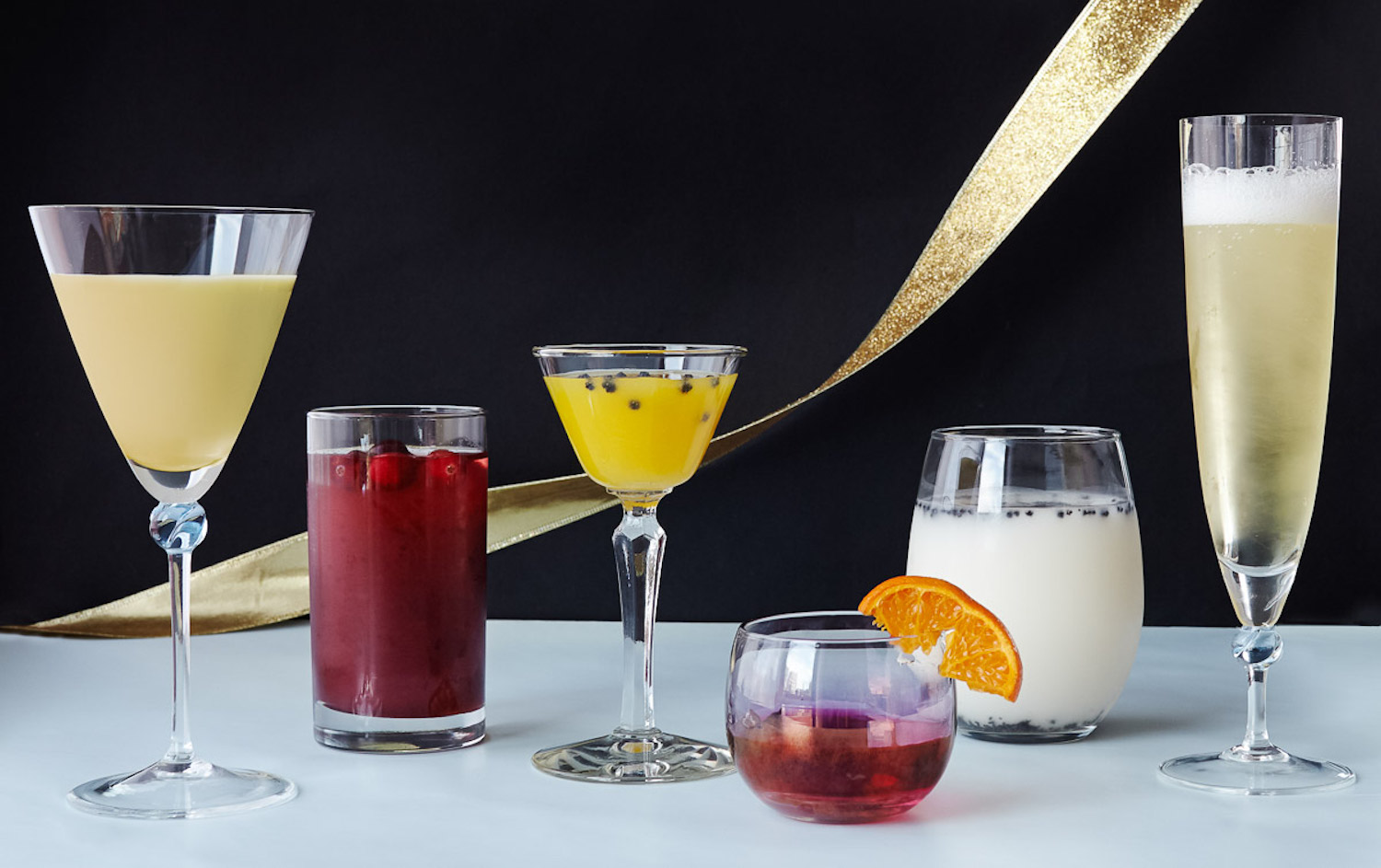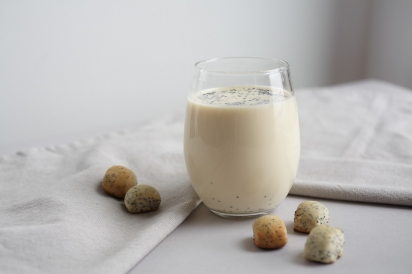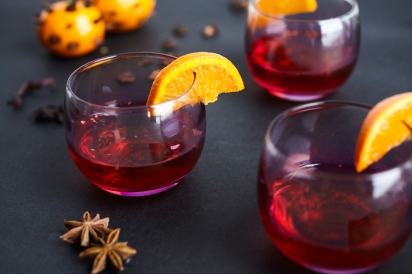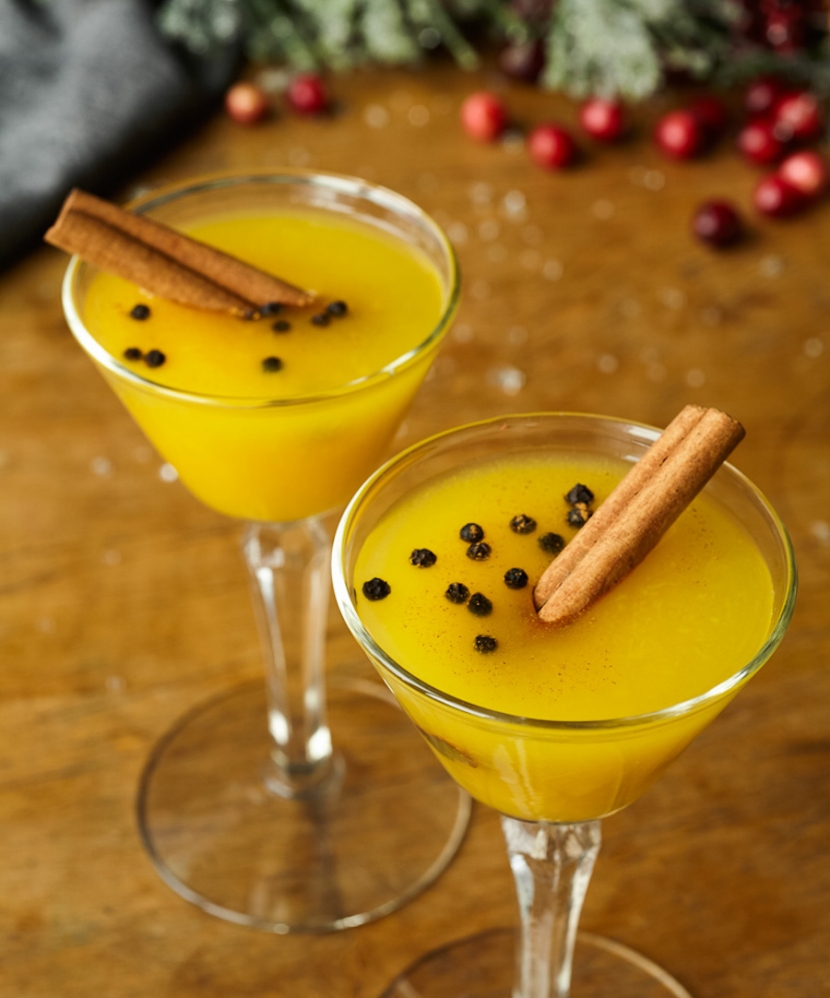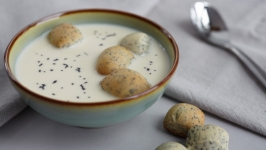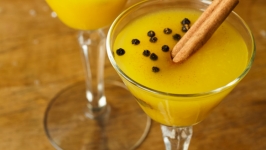Cheers to Christmas—From Jamaica to Ecuador, and Lithuania Too
Much attention is given to holiday feasts and desserts, but there is just as much rich culture contained in seasonal drinking rituals around the world. From the fruity sorrel punch enjoyed in Jamaica come December-time to the crushed poppy seed milk imbibed by Lithuanian Christians in observance of Christmas and the sparkling wine native to Spain, here are just a few of the many international holiday drink traditions represented right here in Queens.
COQUITO–PUERTO RICO
A traditional Christmas drink typically made of rum, coconut milk and condensed milk, the coquito (Spanish for “little coconut”) is the island version of a traditional eggnog, subbing coconut and rum for egg whites and whiskey. To make at home, we recommend using a Puerto Rican–made rum like Don Q, or—if you can get your hands on it—Barrilito, which is made in small batches and aged in sherry casks (Liquor & Wine Warehouse in Corona typically carries at least one variety of Barrilito). At Don Coqui, a Puerto Rican restaurant in Astoria, you needn’t wait for Christmas to indulge. Manager Brittany Manjn says they serve after-dinner shots of coquito year round.
CAVA–SPAIN
Only wines made in the Champagne region of France can properly be called Champagne, but Spain has long produced many fine sparkling wines using the same winemaking techniques; the grapes are stored and produced in a cellar, earning the wine its name: Cava.
Spaniards the world over seek out the best cava to celebrate the winter holidays (though it’s also enjoyed throughout the year, and consumed more heavily in Catalonia, since Spanish drinkers tend to tipple regionally). It’s customary to drink cava at Christmas Eve dinner and on New Year’s Eve, after dinner, paired with Spanish sweets like turrón (a nougat made of honey, eggs, sugar and toasted nuts).
At Despaña, a seller of traditional food and wine imported from Spain, with an outpost in Jackson Heights, the brand’s wine buyer Veronica Stoler advises brushing up on your sparkling wine lingo before purchasing some bubbly. She says, “‘Prosecco’ is often the word people use for an ‘inexpensive bottle of bubbly that will be mixed with juice at brunch’ (regardless if they actually want anything from Italy). I think that a lot of mass-produced cava has saturated the market making it look ‘cheap’ as a style of wine. Personally, I would recommend Brut or dryer Brut Nature styles, which will be clearly labeled, for a better quality sparkling wine for drinking (not mixing).”
Cava producers Stoler recommends perusing for? “Raventos i Blanc, specifically their rosé ‘de Nit,’ are a wonderful family-run sparkling wine estate and the first to pioneer leaving the DO Cava [the official classification of cava] in favor of their own designation Conca del Riu Anoia,” she says.
POPPY SEED MILK–LITHUANIA
In Lithuania, there are certain preparations every household undergoes leading up to Christmas Eve, which is more anticipated than Christmas Day. Many ceremonies and rituals dating back to Lithuania’s pagan times are performed leading up to the holiday. Homes are thoroughly cleaned, conflicts are resolved, ancestors are remembered and the dinner table is decorated with hay and linen to symbolize Christ’s birth in a manger.
Amidst the traditional 12-dish meatless supper (representing the 12 apostles)—herring, beet soup, mushroom-filled dumplings, cranberry pudding and the like—observant Lithuanians drink their own version of eggnog, often served with jaw-breaking Kūčiukai (Christmas Eve cookies); consumed together, it’s a bit like breakfast cereal.
Rimas Kezys, co-owner of The Avenue Restaurant and Bar in Glendale, which hosts a bi-monthly Lithuanian brunch, says that while he’s personally not a fan of the creamy concoction, and it’s not offered at the restaurant, his mother makes it every year. Kezys’s family serves poppy seed milk as a dessert, mixing Klsielius (thick sweet berry juice), Kūčiukai and the poppy seed milk all together.
SORREL PUNCH–JAMAICA
Made with dried sorrel flowers (otherwise known as hibiscus), fresh ginger, star anise, cinnamon and allspice (wine, rum or other alcohol optional), sorrel punch is Jamaica’s variation of a drink that’s made all over the Caribbean come Christmastime. Sorrel is planted in August so it’s ready to be picked around Yuletide. Traditionally, fresh flowers are steeped for several days to become the base of this punch, but you can also use dried flowers, steeped in boiling water. Sorrel punch is a symbol of hospitality; it’s traditional to welcome guests into your home with a cup, or to give a batch as a gift.
At Hibiscus Restaurant and Bar in South Richmond Hill, manager Theresa Budhu says their sorrel punch is made with flowers imported from Trinidad or Jamaica. “We don’t put any secret ingredients in it. We just put some love in it; that’s it,” she says.
CANELAZO–ECUADOR
From Fiestas de Quito in early November through Christmas, Ecuadorians drink copious amounts of canelazo, a hot cinnamon drink made of passionfruit juice, lemon and water boiled with cinnamon sticks, splashed with aguardiente—a sugarcane based spirit native to Ecuador.
Nestor J. Dutan, who works at Rincon Melania, an Ecuadorian restaurant in Long Island City, learned to make canelazo in Cochahauyco, Cañar, the providence his family is from. While it’s not listed on Rincon Melania’s menu, Dutan says they serve it during holidays, on Ecuadorian Independence Day and, on special occasions, to the restaurant’s most loyal customers. “This drink is made for celebration,” he said. “It speaks true to my culture and background. … When I say I will do a batch you know it will be the best of times.”
When it comes to sourcing Zhumir (aguardiente); it’s not so hard to find in Queens. But Dutan says he can tell a difference between the bottles sold here and in Ecuador. “Everytime I am in Ecuador, I try to bring at least two bottles with me to have it on hand,” he says. “And, ever since Rincon Melania has opened, it has become much easier to get bottles. All my customers bring me one when they are in Ecuador.”
Liquor & Wine Warehouse
Don Coqui
Despaña
The Avenue Restaurant and Bar
Hibiscus Restaurant and Bar
Rincon Melania | @rinconmelanianyc


